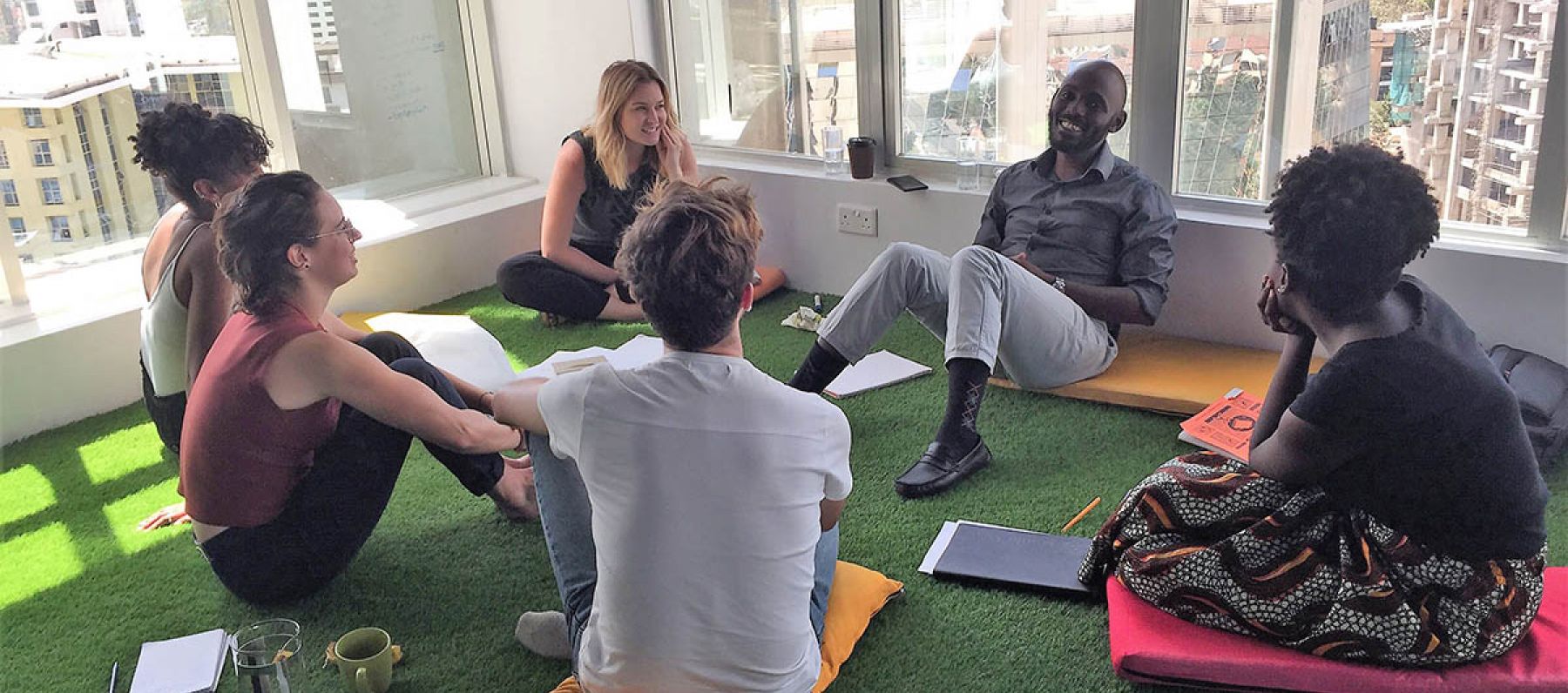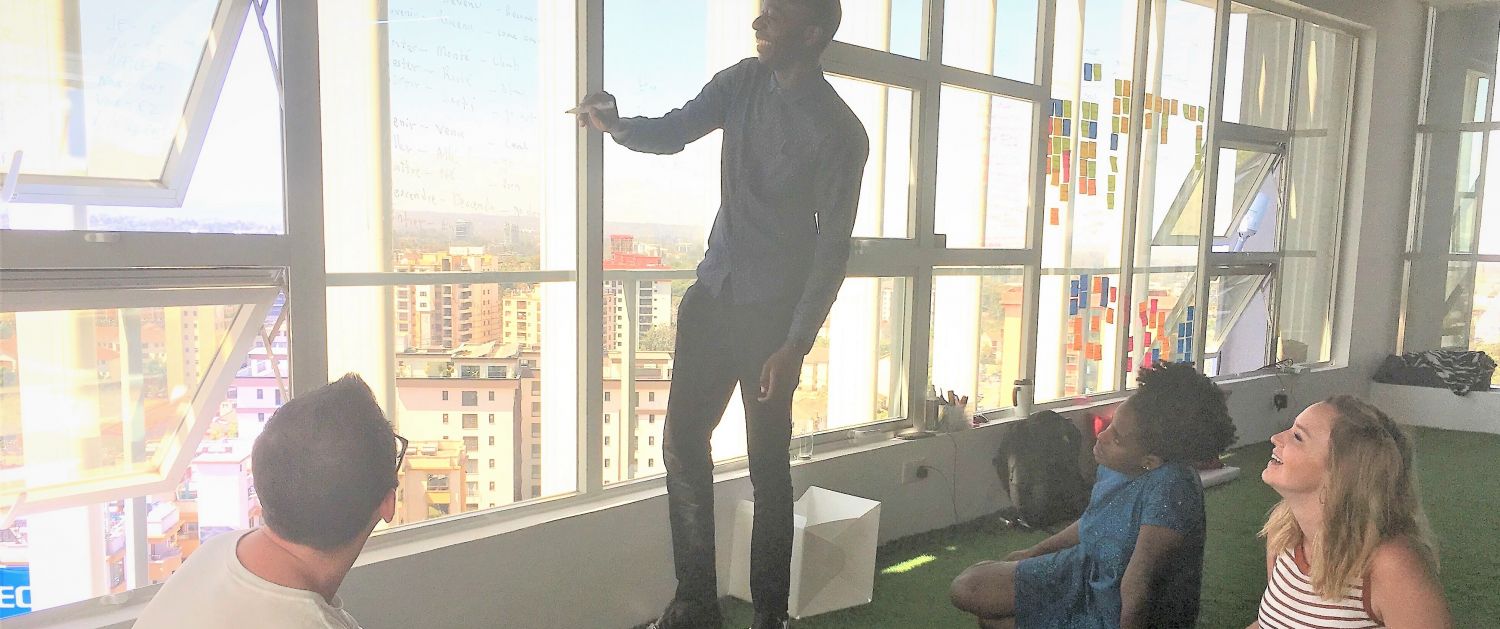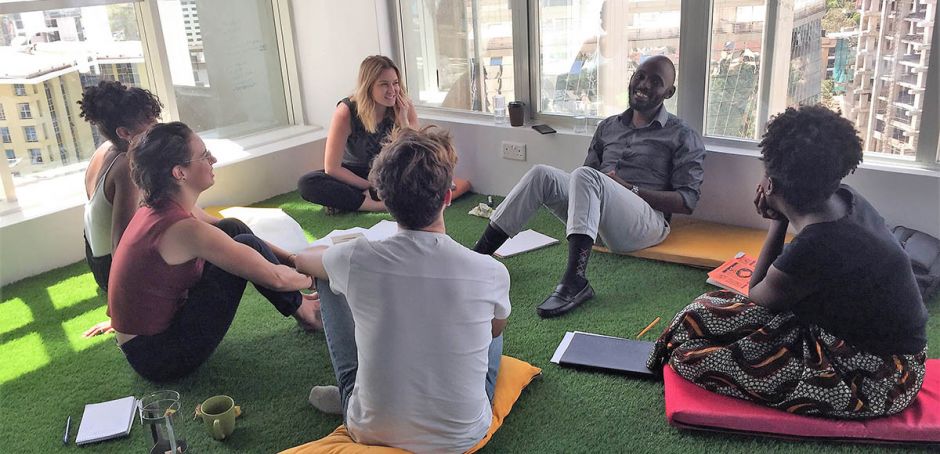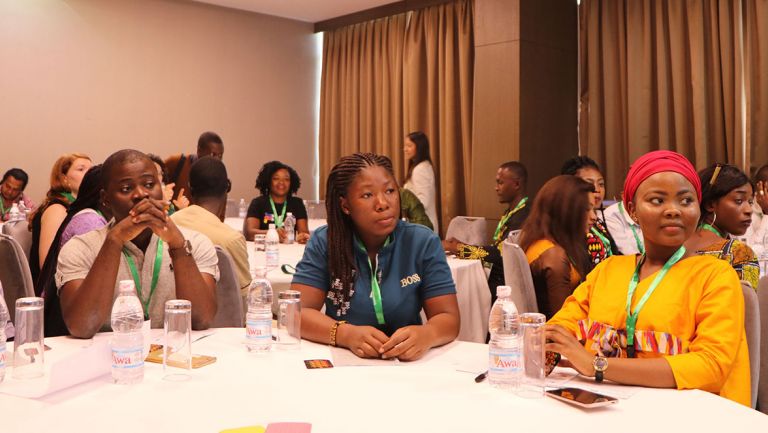Sign up for our monthly newsletter

Why our studio is a languages classroom
It’s Thursday afternoon in the ThinkPlace Kenya studio in Nairobi and school is in session.
Designers sit, all eyes on the teacher, as he runs through verb conjugation and sentence construction in French.
For many people, learning a language falls squarely into the life-basket marked ‘’hobbies’’. It is something we might do to prepare for a holiday, to extend ourselves personally or to demonstrate our intent to explore new cultures.
Not here.
“These classes and others like them are a crucial part of building our toolkit as designers in Africa,” says ThinkPlace’s Carlyn James. “So many people underestimate the importance of language as a core design capability in Africa. We are not making that mistake.”
Consider this: In Kenya alone, where ThinkPlace’s strategic design studio is based, there are more than 50 languages. Across Africa there are hundreds - this is often estimated to be in the thousands.
Within the 22-member ThinkPlace studio, at least 15 different languages are spoken, including Portuguese, French and various Kenyan languages. This vital capability is growing, with French and Swahili language courses held in-house for staff four times each week.
“For a company that is always trying to forge connections, break down silos and create new possibilities, language is huge,” James says.

Africa is too often divided along language lines. Francophone countries in the continent’s West, like Cote d’Ivoire, Burkina Faso, Niger and Mali, are home to projects carried out by ThinkPlace’s French-speaking designers – mostly funded by French or other European aid agencies.
In other parts of Africa – such as Mozambique – the situation is similar, with ThinkPlace’s team of Portuguese and Spanish “Lusophone” designers, companies and funders.
In other places, such as Ethiopia, local languages are far more important, and an inability to speak them makes achieving change next to impossible. Then there’s Swahili, a language that is widely spoken across East Africa.
“These language divisions can be a handbrake on collaboration and on creating positive change that spans across national or cultural borders,” James says. “There are so many shared complex challenges that do not stop at those borders.”
As developing nations with highly-specific cultures, many in the service delivery sector across Africa have become highly sceptical of Western consultancies who fly in outside experts to apply off-the-shelf solutions and methodologies.
ThinkPlace Kenya is determined to build and add local capability so that it can be deeply connected to local people in all of the dozens of nations where it carries out work.
Often, that means employing local people with local language and intercultural communication skills and then training them to become design thinkers, strategic designers and change-leaders.
“We love that this means we are helping build design capability across Africa,” James says. “But it also brings so much knowledge and great diversity of thought to our team.”
As ThinkPlace has expanded its ability to work at scale across Africa and beyond, these numbers have swelled. In Mozambique, we’ve employed three Portuguese speaking designers to work on projects ranging from an ethnographic study to collect first-of-its-kind data on malnutrition among adolescent girls to prototyping and testing new ways of improving sexual and reproductive health services.
In Ethiopia, we’ve recently hired Amharic and Tigrinya-speaking designers to work with the Ministry of Health to establish “Community Labs” that bring together Orthodox priests, school teachers, nurses, and other important voices to collectively identify and solve problems around malnutrition in their own communities. These projects are funded by Big Win Philanthropy and PSI.
“Hiring for language has fundamentally changed our approach to finding the right people and that’s a good thing,” James says. “We are looking for talent, the right mindset and some other kinds of relevant experience that make people good designers. We aren’t just hiring straight out of design school because for the most part that doesn’t exist here.”
New recruits are trained in the ThinkPlace Design System. They quickly adapt to the unique tools and methods used by our designers around the world to turn empathy into insights, iterate and test prototypes and then implement positive change.
But even here, there can be challenges.
“We’ve found that with many of the languages we work in now, there simply is no vocabulary for the kind of strategic design or design thinking we do,” James says.
“Words like “co-design”, “innovation” or “prototyping”, which are central to how we work, simply don’t exist. We’ve had to find ways to adapt the ideas behind human-centred design to make sense to those who we are partnering with.”
At its most fundamental, the point is obvious but must also be stated: If human-centred design means authentically connecting and collaborating with those who will experience change in a complex system, then it cannot take place if you are unable to meaningfully communicate with those people.







